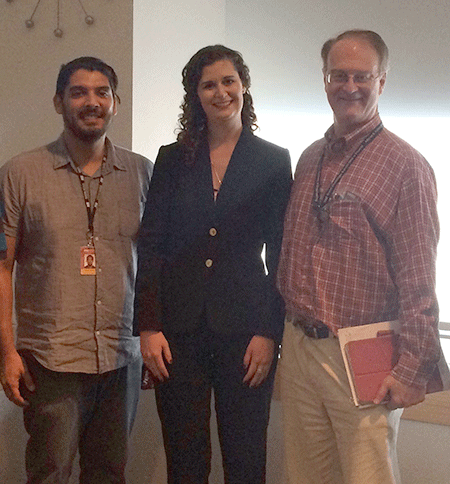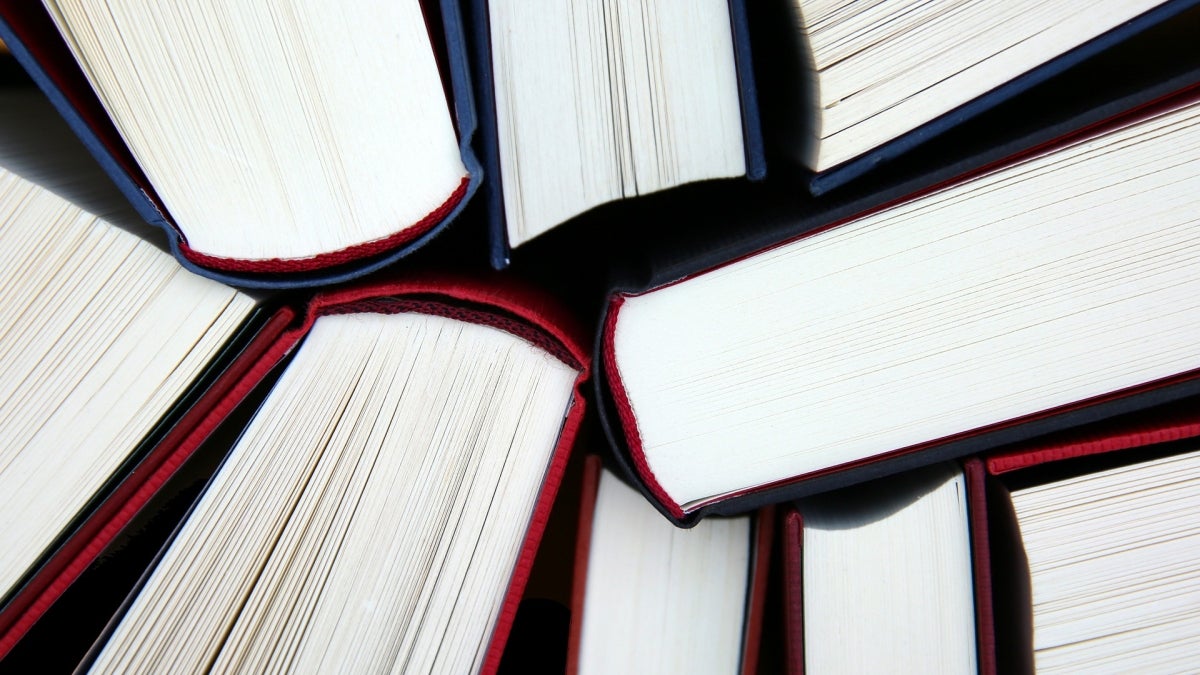As an Arizona State University graduate student, Rachel Yoho wanted to push the boundaries of renewable energy research. What she didn’t fully anticipate is that it would also lead her to questioning how climate change is taught in today’s universities.
In the Biodesign Swette Center for Environmental Biotechnology, led by Director and ASU Regents’ Professor (and recent Stockholm Water Prize winner) Bruce Rittmann, she found a welcome home to make her research thrive.
There, she focused on microbes that were giving the renewable energy field a literal jolt. For her dissertation work, led under the guidance of mentor César TorresCésar Torres is an assistant professor of chemical engineering in the Ira A. Fulton Schools of Engineering., she published several groundbreaking papers on advances in microbial fuel cells, which turn waste into electricity through a bacterial biofilm that has the ability to grow and thrive on an electrode.
“They breathe the metal and give us electrons for energy in the process,” said Yoho.
But while pursuing her PhD, she also became interested in the art of teaching science and earned a certificate in scientific teaching in higher education.
Among the most polarizing issues encountered in science and society today is the topic of global climate change. Despite nearly universal scientific consensus that it is indeed real and caused by humans, many politicians and members of the American public continue to be skeptical of the science.

While working in the lab of Cesar Torres (left), ASU graduate student Rachel Yoho and Biodesign Swette Center for Environmental Biotechnology Director Bruce Rittmann teamed up to show that how climate change and environmental issues were covered in just 4 percent of all pages in introductory science textbooks.
She was inspired by her science education courses to ask research questions that reflected the interdisciplinary nature of her lab-based research in the Biodesign Swette Center for Environmental Biotechnology at ASU’s Biodesign Institute. So, when she started examining the topic of climate change in introductory science courses by poring over introductory science textbooks, Yoho was surprised by the paucity of materials devoted toward subjects like global warming, climate change and renewable energy applications.
“In a cutting-edge research lab, we are used to looking at things across disciplines,” said Yoho, who now performs research and teaches at Miami University in Oxford, Ohio. “Within the educational environment, I wanted to see how different disciplines approach topics, and so, we looked at the terminology and content of textbooks, which are likely the most well-established and well-respected first or second stops for information in undergraduate education.”
The introductory textbooks were also chosen because they “represent the intersection of teaching to non-scientists (popularization of science) and training for future scientists.”
Now, in new research published in the journal Environmental Communication, Yoho and co-author Rittmann examined the more than 15,000 combined pages from current editions of 16 of the leading physics, biology and chemistry undergraduate textbooks published between 2013 and 2015.
They found that less than 4 percent of pages were devoted toward discussing climate change, global warming, related environmental issues or renewable energy applications.
In addition, the research team found:
• While they observed a large variation for individual books, biology textbooks had on average the largest number of pages discussing the effects of climate change, but still less than 2 percent, while chemistry textbooks showed the largest variation, and physics books have an average of less than 0.5 percent of total pages.
• The greatest content is in the final third of the book for biology and chemistry, which supports a general trend in education in that “applications” usually are addressed towards the end of a course of study, building on a firm foundation of content knowledge.
• Among the three disciplines, the least emphasis was placed on renewable energy technologies in the biology textbooks examined. Characteristically, alternative fuels and other technologies related to the transportation sector are emphasized heavily in chemistry and physics.
• Nuclear energy, which was addressed separately, is found on less than 1 percent of textbook pages and unfavorably represented.
“The terms we included were not just limited to a keyword search, but also involved going page by page through each of the textbooks. We looked for related topics like any applications and discoveries related to fossil fuels, and renewable energy technologies like wind and solar,” said Yoho.
They noted that climate change, global warming, fossil fuels, renewable energy and nuclear energy are not often a focus of the textbooks or course for these disciplines. Furthermore, these topics may not even be the focus of a single unit in one of these courses and are unlikely to be a primary factor in the selection of the course textbook.
However, these cross-cutting topics of socio-scientific debate represent important societal and environmental contexts for developing informed and productive citizens.
“The discussion within these traditional, compartmentalized science disciplines has implications on introductory-level science education, the public perception of science, and an informed citizenship,” said Rittmann.
Going forward, they think perhaps it’s time for introductory sciences to be more explicit about some of these pressing topics that span multiple disciplines.
“It’s a difficult balance in an introductory course,” said Yoho. “There’s so much information to cover in a short time. However, our students are facing these issues inside and outside of the classrooms. Our communities feel the impacts of our energy decisions and climate.”
Some discussion can go a long way toward preparing students.
“A next step might be to focus on the terms and content we discuss, as well as the potential role of these topics in introductory education,” Yoho added.
“However, no single discipline can tackle this alone,” wrote Yoho in the paper. “While the traditional disciplinary lines influence specific discussions, the overall trends reveal a relatively small percentage of pages allotted to the topics related to energy technologies, climate change and related environmental issues across the disciplines.”
By documenting that large textbooks devote relatively few pages to these pressing societal issues, this research calls into question the effectiveness of the information provided to students in introductory materials.
This manuscript was published in Environmental Communication, available online April 29, 2018.
More Science and technology

Lucy's lasting legacy: Donald Johanson reflects on the discovery of a lifetime
Fifty years ago, in the dusty hills of Hadar, Ethiopia, a young paleoanthropologist, Donald Johanson, discovered what would become one of the most famous fossil skeletons of our lifetime — the 3.2…

ASU and Deca Technologies selected to lead $100M SHIELD USA project to strengthen U.S. semiconductor packaging capabilities
The National Institute of Standards and Technology — part of the U.S. Department of Commerce — announced today that it plans to award as much as $100 million to Arizona State University and Deca…

From food crops to cancer clinics: Lessons in extermination resistance
Just as crop-devouring insects evolve to resist pesticides, cancer cells can increase their lethality by developing resistance to treatment. In fact, most deaths from cancer are caused by the…
